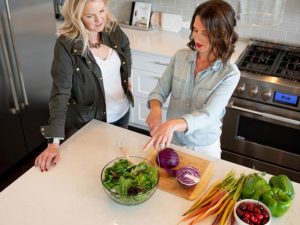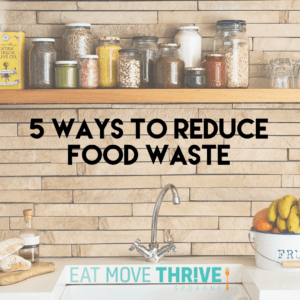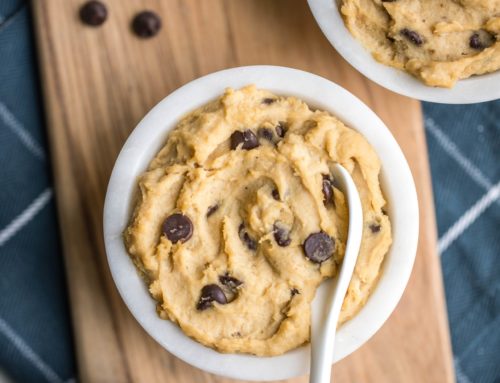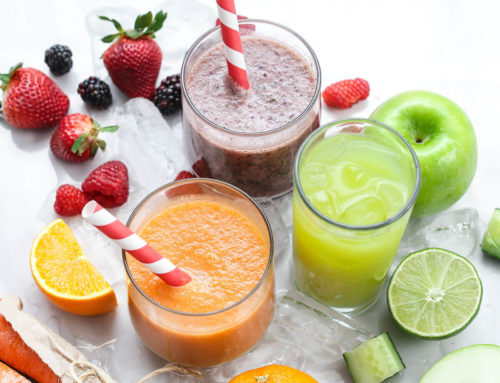By Lauren Kline, Bastyr University Dietetic Intern & Edited by Monika Jacobson, RDN
In the US, about 30-40% of the food produced goes to waste. It often spoils before consumption or is wasted by consumers or retailers. Poor storage and handling can contribute to food waste as well. Unfortunately, food waste is responsible for at least 6% of greenhouse gas emissions in the US that contribute to climate change. In addition to food waste, we often produce other trash associated with food and cooking. Think of all the plastic bags and cartons we compile when purchasing groceries!
Luckily, with some simple tips and tricks, you can reduce the waste you produce in your own kitchen. Not only does this have benefits for the environment but you will find that it is better for your wallet. There are so many ways to reduce waste in your kitchen – if you are just getting started, it may feel overwhelming. Feel free to pick and choose a few things that resonate with you to start with. You can always do more later!
- Shop locally

Most food grown in the US travels 1,500 miles before it is put on the shelf. Some food is shipped from Mexico and parts of Asia! Local food does not travel far, which means that is uses less fuel and creates less CO2 emissions. This is important because CO2 emissions contribute to climate change. Local food typically has waste and spoilage because it does not travel far.
Tips for shopping locally:
- Search your grocery store for a local produce section.
- Find a farmer’s market in your community: https://www.ams.usda.gov/local-food-directories/farmersmarkets. Some states allow the use of Supplemental Nutrition Assistance Program (SNAP) and Women, Infants, and Children (WIC) benefits at farmers markets. In Seattle, WA you can swipe your SNAP card at the farmer’s market and get double that amount to spend on locally grown fruits and vegetables at the market!
- Build a long-standing relationship with a farm by joining a Community Supported Agriculture (CSA) farm.
- Grow your own food. Potted herbs like rosemary and mint are a fun and easy way to start. Greens, such as lettuce and kale, and tomatoes can be grown in pots on porches or in your yard.
- Eat a plant-based diet

A plant-based diet doesn’t have to completely exclude animal products. Rather it emphasizes plant foods like vegetables, fruits, beans, lentils, nuts, seeds, and whole grains. Plant foods produce less carbon than animal foods, which contributes to climate change. If you do choose to eat animal foods, know that some foods, like chicken and eggs, produce less carbon than others, like beef.
- Reduce food scraps and waste

Instead of throwing food scraps away, many can be eaten or used to make broth.
- Freeze clean vegetable scraps like onion and garlic skins, mushroom stems, and carrot trimmings to make a simple, homemade vegetable broth.
- Save chicken bones to make a delicious and nutritious broth.
- Use turnip greens, carrots greens, beet greens in salads, soups and stir-fries. Or make this carrot top pesto! This is an excellent way to reduce waste and increase the nutrients that you eat.
Composting is another great way to reduce food scraps and waste. Food scraps that can’t be used as food can be turned into rich soil useful for gardening and farming. If you are new to composting, there are many ways to get started:
- Google “organic collection” or “compost pickup” in your city to see if they offer composting pickup services.
- Start your own backyard compost
- If the first two options are not available to you, you may be able to save your food scraps and give them to a neighbor or local farmer who already composts (or who has pigs!). Note: If you do this, keep your food scraps in the freezer between drop offs to eliminate smell.

- Reduce packaging waste

Buy pantry items in bulk. Many stores, including Rosauers, Winco, Fred Meyer, Safeway, Whole Foods and other food coops, sell items in bulk. By purchasing foods in bulk, you can buy just the amount you need and reduce packaging waste by bringing your own reusable bags and jars. This can also help you save money on groceries. Some foods that you can purchase in bulk:
- Whole grains like oats, quinoa, and rice
- Legumes (beans and lentils)
- Nut butters
- Nuts and seeds
- Dried fruit
- Salt
- Herbs and spices
- Granola
Other ways you can reduce packaging waste include:
- Wash and reuse zip lock baggies or purchase silicon bags.
- Reuse glass jars to store bulk items like grains, beans, nuts, and seeds in your pantry.
- Purchase food with the least amount of packaging when possible, or choose recyclable containers.
- Recycle food containers. Look up your community’s recycling guidelines and always clean your recycling thoroughly before tossing it.
- Choose reusable kitchenware

![]()
Choosing reusable kitchenware like silicone bags and glass jars can be great ways to reduce waste over the long-term. These items are becoming more widely available at grocery stores and online. The Package Free Shop is a great place to start. Note: Don’t throw away useable items that you already have to replace with more sustainable options. Simply purchase new sustainable items as they are needed. Here are some basic reusable items that can replace single-use kitchen essentials:
- Swedish dishcloth to replace paper towels
- Reusable silicone sandwich bag to replace plastic baggies
- Beeswax food wrap to replace saran wrap
- Net produce sacks to replace plastic bags
As you can see, there are many simple ways you can start reducing waste in your kitchen now. Choose a few areas that feel doable or important to you and feel free to do more as you go. Perhaps one day you will even aspire to achieve a waste free kitchen!
Resources:
- https://ourworldindata.org/food-waste-emissions
- https://how2recycle.info/check-locally
- https://www.trashisfortossers.com/a-step-by-step-guide-to-composting/
- https://www.trashisfortossers.com/four-solutions-to-help-you-create-less-waste/
- http://css.umich.edu/factsheets/carbon-footprint-factsheet
- http://css.umich.edu/factsheets/carbon-footprint-factsheet
- https://www.uvm.edu/vtvegandberry/factsheets/buylocal.html
- https://medium.com/adapting-in-place/is-buying-your-food-locally-a-good-alternative-to-the-grocery-store-5e786606da33
- https://www.gardeningknowhow.com/composting/basics/starting-compost-pile.htm



